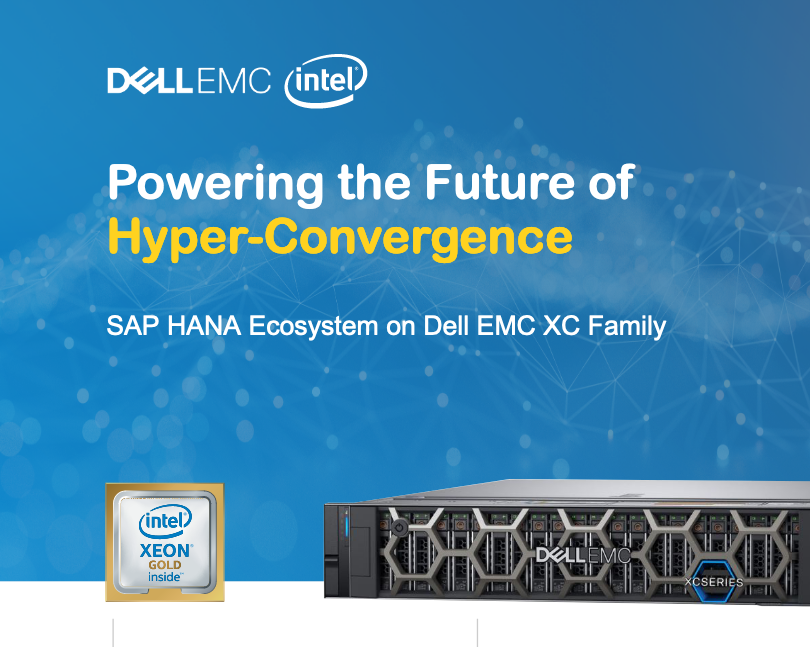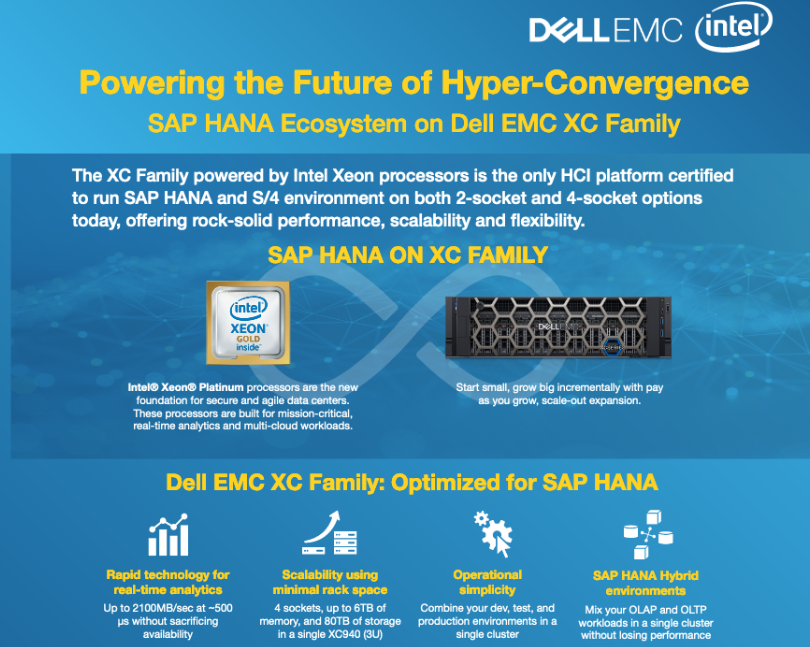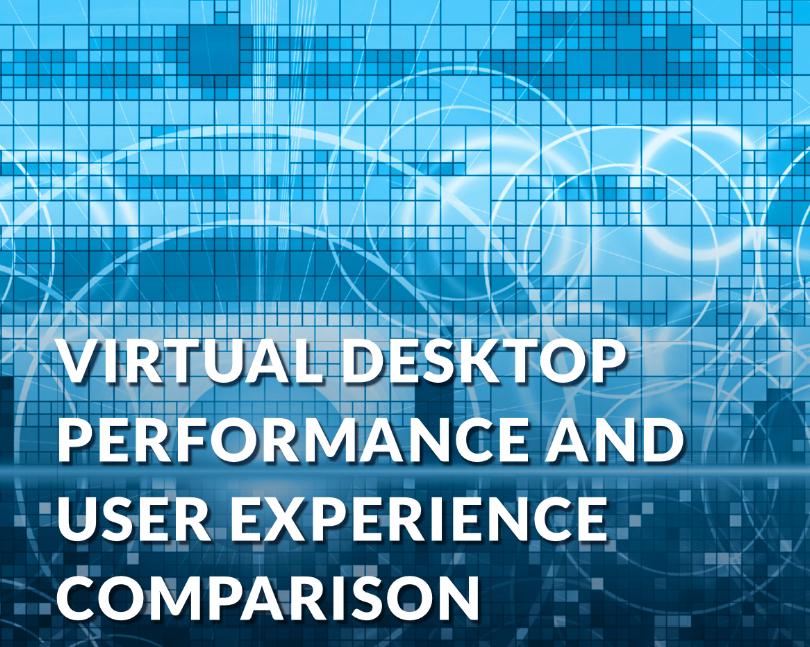Accelerate Data-Driven Innovation
In the realm of modern data-driven enterprises, the performance and scalability of database infrastructure play a pivotal role in operational efficiency and agility. MongoDB, a leading NoSQL database, is renowned for its flexible data model and distributed architecture. When deployed on Dell PowerFlex, a software-defined storage and compute platform, with the high-performance NVMe/TCP protocol, the result is a potent combination that addresses the growing demands of modern workloads.
UNLEASH THE POWER OF TRADING
High Performance Trading from Robust and comprehensive solution delivered by KX on Dell PowerFlex Powered by AMD, NVIDIA and KIOXIA
Unleashing Trading Power Through Technological Transformation
In the rich-reward yet high-risk financial trading world, super-fast analytics offers competitive edge, leaving no-one behind. This has also had an impact on their traders as the legacy platforms from which they consume their data and information have failed to keep pace with the exponential growth of market data, leading to a point where traders and decision makers are challenged to make timely, data-driven decisions. In short: this whitepaper equips you with the tools and strategies for turning any fintech company into a high-performance trading analytics powerhouse using Dell PowerFlex software-defined storage infrastructure with best-of-breed technology from AMD, NVIDIA and KIOXIA.
Convergence - AI ML Pipelines + Data Dell PowerFlex Kioxia PM7 SAS SSDs and nVIDIA AI Enterprise Suite
Learn More
In today’s dynamic landscape, the convergence of AI ML pieplines and data unfolds as a pivotal force driving innovation.
This convergence empowers organizations to transcend boundaries gaining insights into operations, customers, and markets.
But converging traditional database workloads with Machine learning pipelines into single platform comes with challenges. These challenges span a range of aspects, including data ingestion, processing, storage solutions for AI and ML models, as well as the imperative for real-time decision-making and the need for accurate predictions.
This convergence empowers organizations to transcend boundaries gaining insights into operations, customers, and markets.
But converging traditional database workloads with Machine learning pipelines into single platform comes with challenges. These challenges span a range of aspects, including data ingestion, processing, storage solutions for AI and ML models, as well as the imperative for real-time decision-making and the need for accurate predictions.
Dell PowerFlex Unified Storage for Block and File
Learn More
SMALL FOOTPRINT EXCEPTIONAL PERFORMANCE with KIOXIA PM6 Series SAS SSDs
The Internet of Things is an emerging concept and is growing fast and it typically consists of various levels of integration, and edge computing is one of them. Edge Computing needs to be lean, Flexible, modular, and open infrastructure and is the primary requirement of IoT solutions. The primary goal of edge computing is to run your workloads and get quick actionable insights right at the edge where data is created using purpose-built hardware-as-a-service and is accomplished with Azure Stack Edge. Azure Stack Edge is an Azure-managed device that brings compute, storage, and intelligence to the edge to get actionable insights.
Dell PowerFlex Unified Storage supporting Block and File using Kioxia PM7 Series SAS SSDs
In the digital age and amidst digital transformation, the outdated and ineffective approach of managing storage through a complex, cluttered, and siloed system that led to confusion and chaos is a thing of the past. The need for a platform where disparate data from various sources can coexist has never been greater.
Dell PowerFlex with Openshift for Container Management
Learn More
Dell PowerFlex Software-Defined Infrastructure for SQL Server Containers and accelerate its performance using Kioxia PM6 Series SAS SSDs
In recent years, organizations have considered the cost of storing data, processing data, business agility, time-to-market, high availability, management overheads and emerging technology adoption as critical factors to success. This has led to a rise of cloud computing, most notably server and storage infrastructure—as enterprises explore and enjoy the potential cost and agility benefits that come with using virtual infrastructure on demand.
Dell PowerFlex Software-Defined Infrastructure for SQL Server Containers and accelerate its performance using Kioxia PM6 Series SAS SSDs
In recent years, organizations have considered the cost of storing data, processing data, business agility, time-to-market, high availability, management overheads and emerging technology adoption as critical factors to success. This has led to a rise of cloud computing, most notably server and storage infrastructure—as enterprises explore and enjoy the potential cost and agility benefits that come with using virtual infrastructure on demand.
Dell Integrated System for Microsoft Azure Stack HCI
Learn More
In today’s dynamic landscape, the convergence of AI ML pieplines and data unfolds as a pivotal force driving innovation.
This convergence empowers organizations to transcend boundaries gaining insights into operations, customers, and markets.
But converging traditional database workloads with Machine learning pipelines into single platform comes with challenges. These challenges span a range of aspects, including data ingestion, processing, storage solutions for AI and ML models, as well as the imperative for real-time decision-making and the need for accurate predictions.
SMALL FOOTPRINT EXCEPTIONAL PERFORMANCE with KIOXIA PM6 Series SAS SSDs
The Internet of Things is an emerging concept and is growing fast and it typically consists of various levels of integration, and edge computing is one of them. Edge Computing needs to be lean, Flexible, modular, and open infrastructure and is the primary requirement of IoT solutions. The primary goal of edge computing is to run your workloads and get quick actionable insights right at the edge where data is created using purpose-built hardware-as-a-service and is accomplished with Azure Stack Edge. Azure Stack Edge is an Azure-managed device that brings compute, storage, and intelligence to the edge to get actionable insights.
Dell PowerFlex for VMware Greenplum
Learn More
Transform Business Intelligence with Simple and Flexible Architecture
A modern database server platform for analytics from BI to AI with Flexible Architecture and Extreme performance is designed for next-generation data warehouse and large- scale analytical processing. Dell PowerFlex with Kioxia CM6 NVMe SSDs is the high performing, resilient, scalable and flexible solution that can meet all the requirements of modern business with challenges conducting big data analytics to achieve dynamic growth and flexibility.
KIOXIA PCIe4.0 NVMe SSDs for extreme database performance
Learn More
Comparing Database performance on PCIe4.0 NVMe SSDs from Kioxia with Intel PCIe 3.0 NVMe SSDs
For years, the IT industry has been talking about an impending “data tsunami”—an unprecedented wave of data that will need to be stored and analyzed. This idea was primarily driven by an explosion in internet-connected devices; i.e., the internet of things (IoT)—and the desire to consume massive amounts of data from these devices in order to enhance services. Today, the tsunami is upon us. Enterprise IT organizations must sustain critical application data flow with steadily increasing volumes of data arriving at greater velocity. This data flow is not limited to structured databases, but also includes semi-structured data, such as email, and unstructured data consisting of such items as videos, images, documents and sensor data, among others.
Comparing Database performance on PCIe4.0 NVMe SSDs from Kioxia with Intel PCIe 3.0 NVMe SSDs
For years, the IT industry has been talking about an impending “data tsunami”—an unprecedented wave of data that will need to be stored and analyzed. This idea was primarily driven by an explosion in internet-connected devices; i.e., the internet of things (IoT)—and the desire to consume massive amounts of data from these devices in order to enhance services. Today, the tsunami is upon us. Enterprise IT organizations must sustain critical application data flow with steadily increasing volumes of data arriving at greater velocity. This data flow is not limited to structured databases, but also includes semi-structured data, such as email, and unstructured data consisting of such items as videos, images, documents and sensor data, among others.
Dell PowerFlex - Breaking Database performance with KIOXIA
Learn More
Today’s mission-critical enterprise databases support essential applications for large organizations. Platforms have to deliver the highest performance, address exponential growth, and must be easy to use so SLAs are met. Without the right platform, growth and responsiveness aren’t what they should be.Many organizations find that Hyperconverged infrastructure is a great solution for enterprise database requirements. In particular, the Dell PowerFlex Family with 12Gb/s enterprise SAS SSDs from Toshiba Memory solves performance, SLA, and growth issues other platforms can’t. In this executive summary, you’ll see that Dell PowerFlex solutions unlock new IT transformation possibilities for organizations that demand the best.
Dell XC Family - Hyperconverged Infrastructure
Learn More
As applications become more complex, enterprises often struggle to cope with performance needs, the need to consolidate workloads, operational agility, and IT simplicity. But with HCI (Hyperconverged infrastructure) solutions from Dell EMC and Toshiba Memory, your enterprise can adapt to these challenges without complexity or compromise.Dell EMC XC Family of hyperconverged infrastructure, powered by Toshiba Memory PM5 Series 12Gb/s enterprise SAS SSDs, can help medium and large organizations consolidate and converge mixed workloads, like VDI and databases, while improving responsiveness and enhancing operational outcomes.
Dell EMC XC FAMILY
The VxFlex Family of Hyperconverged infrastructure combines compute, storage, and networking nodes that deliver flexible and scalable performance with capacity on demand, powered by high-performance drives, including Toshiba Memory PM5 Series 12Gb/s enterprise SAS SSDs.
Sap Hana On Dell EMC XC
Learn More
Powering the Future of Hyper-Convergence SAP HANA Ecosystem on Dell EMC XC Family Intel® Xeon® processors are the new foundation for secure and agile data centers. These processors are built for mission-critical, real-time analytics and multi-cloud workloads at any scale
Dell EMC XC
Learn More
The XC Family powered by Intel Xeon processors is the only HCI platform certified to run SAP HANA and S/4 environment on both 2-socket and 4-socket options today, offering rock-solid performance, scalability and flexibility.
VxFlex vRealize - vROps
Learn More
The vROps Management Pack (MP) for VxFlex integrated rack enables the collection of analytical data and monitors health, capacity, and performance of VxFlex integrated rack systems.
In addition to monitoring, the MP also provides alerts based on symptoms and alert definitions.
VMware vRealize Operations, sometimes referred as vROps and formerly called vCenter operations Manager, is software product that provides operational management across physical, virtual and cloud environment, no matter if those environments are based on vSphere, Hyper-V, or AWS.
The software provides a platform to solve problems faster with real-time monitoring and predictive analytics for Dell EMC VxFlex delivered in vRealize with this management pack. Clear Views into VxFlex resources simplify troubleshooting and enable you predict day-to-day CPU, memory and disk capacity as well as longer term trends. Administer all of your resources with confidence, view dashboards, generate inventory reports and get clear view into VxFlex clusters all in one place.
VxFlex vRealize - vROps
Learn More
Intelligence built into the dashboards with unlimited extensibility by using management packs. Capacity analytics, to plan future projects. Public APIs, to develop management packs with additional functionalities. Smart alerts plus charts and metrics information to drill down the alerts and give recommendations
VDI – Horizon on DTCP
Learn More
A Comparison of Horizon on DTCP, Amazon WorkSpaces on AWS, and Microsoft Windows Virtual Desktop on Azure
VDI – Horizon on DTCP (Dell Technologies Cloud Platform)
With the current trend toward distance working and learning, many organizations are currently reevaluating their remote connectivity architectures. The ability to provide files and applications to users at scale within a secure, efficient, and cost-effective environment are key strengths of Virtual Desktop Infrastructure (VDI) and Desktop- As-A-Service (DaaS) environments.
Dell PowerFlex - Breaking Database performance with KIOXIA
Today’s mission-critical enterprise databases support essential applications for large organizations. Platforms have to deliver the highest performance, address exponential growth, and must be easy to use so SLAs are met. Without the right platform, growth and responsiveness aren’t what they should be.
Many organizations find that Hyperconverged infrastructure is a great solution for enterprise database requirements. In particular, the Dell PowerFlex Family with 12Gb/s enterprise SAS SSDs from Toshiba Memory solves performance, SLA, and growth issues other platforms can’t. In this executive summary, you’ll see that Dell PowerFlex solutions unlock new IT transformation possibilities for organizations that demand the best.
Dell EMC XC FAMILY

Dell XC Family - Hyperconverged Infrastructure

As applications become more complex, enterprises often struggle to cope with performance needs, the need to consolidate workloads, operational agility, and IT simplicity. But with HCI (Hyperconverged infrastructure) solutions from Dell EMC and Toshiba Memory, your enterprise can adapt to these challenges without complexity or compromise.
Dell EMC XC Family of hyperconverged infrastructure, powered by Toshiba Memory PM5 Series 12Gb/s enterprise SAS SSDs, can help medium and large organizations consolidate and converge mixed workloads, like VDI and databases, while improving responsiveness and enhancing operational outcomes.
Dell EMC XC FAMILY
The VxFlex Family of Hyperconverged infrastructure combines compute, storage, and networking nodes that deliver flexible and scalable performance with capacity on demand, powered by high-performance drives, including Toshiba Memory PM5 Series 12Gb/s enterprise SAS SSDs.
SAP HANA on Dell EMC - XC family
The Dell EMC XC Family is a hyper-converged solution that combines compute, networking, and storage resources provided by industry-leading Dell EMC PowerEdge™ servers and Nutanix AOS software. The Dell EMC XC Family is a portfolio of Hyperconverged infrastructure (HCI) solutions that consists of XC Series, and XC Core. Dell EMC XC Family, Hyperconverged infrastructure (HCI) platform with XC740XD, XC940 and Nutanix AHV is now certified to host SAP HANA production (and non-production) environments. Also SAP’s certification applies to both XC Series and XC Core offerings. With Dell EMC XC Family, organizations like yours can expect:
- Very high levels of performance
- The ability to combine test, dev, QA, and production on a single platform
- The capacity to consolidate multiple SAP instances
- Compelling business benefits that unlock new opportunities for innovation.
This paper explores the technical capabilities, features, functionality, and benefits of using Dell EMC XC Family hyper-converged infrastructure for SAP HANA. Start small and grow incrementally with pay-as-you-grow flexibility. Scale your business demands grow. Get true enterprise agility, simplified management, and quick deployment.

SAP HANA ON Dell EMC XC
Powering the Future of Hyper-Convergence SAP HANA Ecosystem on Dell EMC XC Family Intel® Xeon® processors are the new foundation for secure and agile data centers. These processors are built for mission-critical, real-time analytics and multi-cloud workloads at any scale

Dell EMC XC
The XC Family powered by Intel Xeon processors is the only HCI platform certified to run SAP HANA and S/4 environment on both 2-socket and 4-socket options today, offering rock-solid performance, scalability and flexibility.
VxFlex vRealize - vROps

The vROps Management Pack (MP) for VxFlex integrated rack enables the collection of analytical data and monitors health, capacity, and performance of VxFlex integrated rack systems.
In addition to monitoring, the MP also provides alerts based on symptoms and alert definitions.
VMware vRealize Operations, sometimes referred as vROps and formerly called vCenter operations Manager, is software product that provides operational management across physical, virtual and cloud environment, no matter if those environments are based on vSphere, Hyper-V, or AWS.
The software provides a platform to solve problems faster with real-time monitoring and predictive analytics for Dell EMC VxFlex delivered in vRealize with this management pack. Clear Views into VxFlex resources simplify troubleshooting and enable you predict day-to-day CPU, memory and disk capacity as well as longer term trends. Administer all of your resources with confidence, view dashboards, generate inventory reports and get clear view into VxFlex clusters all in one place.
VxFlex vRealize - vROps
Intelligence built into the dashboards with unlimited extensibility by using management packs. Capacity analytics, to plan future projects. Public APIs, to develop management packs with additional functionalities. Smart alerts plus charts and metrics information to drill down the alerts and give recommendations

VDI – Horizon on DTCP
VDI – Horizon on DTCP (Dell Technologies Cloud Platform)
With the current trend toward distance working and learning, many organizations are currently reevaluating their remote connectivity architectures. The ability to provide files and applications to users at scale within a secure, efficient, and cost-effective environment are key strengths of Virtual Desktop Infrastructure (VDI) and Desktop- As-A-Service (DaaS) environments.

